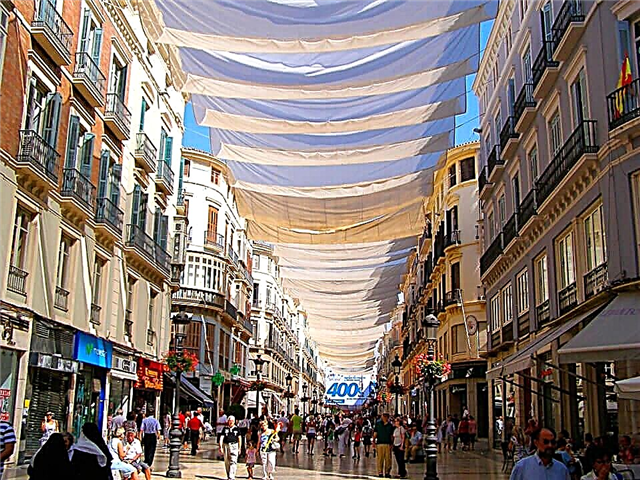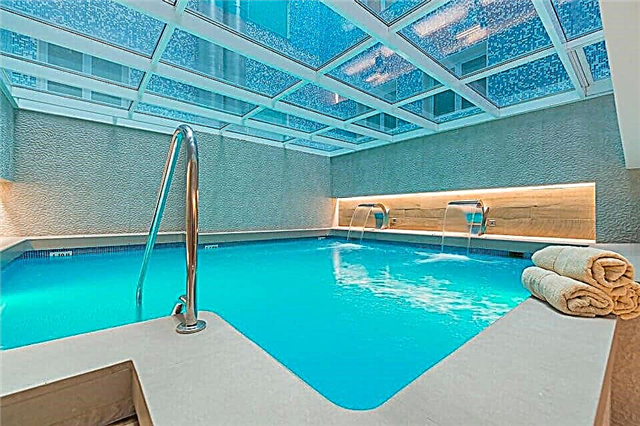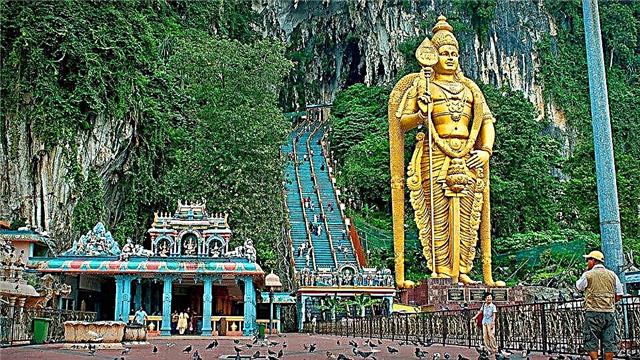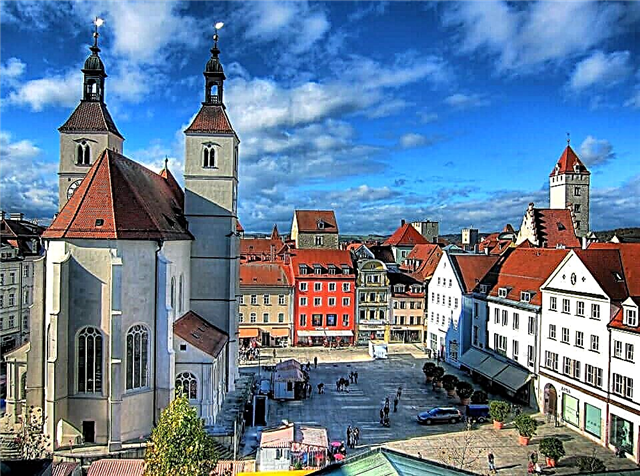The natural diversity, man-made sights of Bavaria attract a large number of tourists here. The Bavarian Alps, picturesque lakes, rivers, medieval cities, castles of kings can be seen using various options for excursions. If you are traveling on your own in southern Germany, it is suggested to stay in the city of Munich. After visiting museums, unique churches, breweries and other sights of the city, you should definitely see the surroundings. At the same time, it is useful to first find out information about where to go from Munich for 1 day. The optimal route of planned trips is proposed to be drawn up in advance, having carefully studied the map of Germany.
Bamberg

The city, which grew on 7 hills in 902, is often called German Rome. Its territory is included in the UNESCO lists "Cultural Heritage of Humanity". Now over 2,400 buildings in the city are considered historical monuments. Among them are monasteries, temples of the Middle Ages, houses of wealthy residents of the Baroque era, monumental buildings from different centuries, the Rybakov quarter (Little Venice). It houses a private boat dock next to the elegant houses along the river bank.
It is suggested to see the scenic attraction during a trip on a pleasure boat. The cathedral square of the city impresses with buildings of different architectural styles: early Gothic, Romanesque motifs, buildings with elements of the Renaissance, Baroque. The structure of the city is divided into three zones: the City on the Hills, the City on the Islands (which grew on two branches of the river), the City of Gardeners (the outskirts). The area around Bamberg is famous for the number of breweries (world leader in density).
Beer has been brewed since the founding of the city. You can learn the history of beer in the Museum (there are only 18 different museums in the city). Now about 50 varieties of the drink are produced, including the famous Bamberg smoked beer. It is easy to get to Bamberg from Munich (you can also from other cities in Germany). Distance of 202 km can be easily covered by car, bus (the most economical option is Flixbus). The duration of the trip is 3 hours.
Oberammergau

The picturesque village is surrounded on all sides by the Alps. They seem to be guarding beautiful half-timbered houses (wooden beams with patterns located across the clay walls). Here in 1748 the famous painter, creator of unique frescoes Frank Zwing, who created the tradition of wall painting, was born and lived in the house of Zum Lüftl. The name of this style of painting is called Lüftlmalerei. The walls of the village dwellings are decorated with scenes from the Bible, everyday life, German fairy tales according to the principle "My nest is the best."
Three important points attract tourists to the village: the painting of the exterior walls of the houses, theatrical performances "The Suffering of Christ" and ancient crafts. The performances arose after the rescue from the plague epidemic in the 17th century. At this time, the first staging of a performance depicting the suffering of Christ, mourning for dead people took place. The performances are repeated every 10 years (the year ends at 0). In the village there are old workshops for woodcarving, glass painting, and pottery. Wood carvers have often been referred to as "the carvers of the Lord God."
Parishes, monasteries, temples, churches were decorated with their products. There are many jewelry workshops in the town. You can learn about the history of the mountain village at the local museum. Convenient access to the village is considered to be the railway transport from Munich station. At the Murnau station, you need to change to a red electric train and go to the village. The duration of the trip is 2 hours. By car, you need to go along the A 95 highway with signs, a navigator for about 1 hour 30 minutes.
Nuremberg

The first thought about the city is to see the place where the famous Nuremberg Trials took place. Nuremberg has long been a haven for Nazi pre-war parties. The city, almost completely destroyed during the Second World War, was rebuilt and it became the second largest settlement in Bavaria. The history of the city begins around 1000 with the construction of the castle and the Nuremberg Fortress on the strategically important rocky bank of the Pegnitz River.
During the Middle Ages, the city was considered the most German ”. The attributes of the power of the emperors of Germany (kleinods) were kept here. The city is home to the largest architectural structure in Germany - the Church of St. Lawrence with the famous "rose" (stained glass window) with dimensions of 9 m in diameter. The most popular Christmas market takes place at the famous market square. She appeared on the site of the burned down Jewish ghetto.
In memory of the victims, the square is adorned with the Frauenkirche church. The amazing clock set not by her is still working. At the edge of the square, an unusual fountain-well is decorated with a Gothic column. It is covered with gold, decorated with 40 figures of kings, knights, a legendary ring. You need to touch him to make your wish come true. Distance from Munich is 170 km, which can be easily covered by car (bus) in 1 hour 50 minutes on the A 9 road.
Zugspitze

Now you don't have to be a brave climber to conquer the highest mountain in Germany and admire the picturesque surroundings of four countries at once: Italy, Austria, Switzerland, Germany. The first conquerors of the summit of the German Alps were a group of climbers led by Josef Naus in 1820. Since then, developed routes for hiking, cable car, railway, funicular lead to the top.
The ascent time is chosen after analyzing the weather data (our own weather station has been at the top of the mountain since 1900). There are often landslides and snowfalls. Lovers of alpine skiing, fans of extreme sports can enjoy snow slopes 300 days a year. At an altitude of 2962 m, a gilded cross gleams, erected according to the idea of a local priest in 1851 (it was renewed with the help of a helicopter delivery in 1993). The attractions of the Zugspitze include the meteorological station, Lake Eibsee, the Tyrolean cable car from Austria, and the Bavarian funicular.
The railway to the mountain is laid from the city of Garmisch-Partenkirchen. Its length is 11 km. The nearest town in Austria (Ehrwald) is located at a distance of 6 km. It is proposed to come to the mountain from Munich: by motorway A 95 (90 km), by rail (on regional trains leaving the central station every half hour) or by regular bus.
Berchtesgaden

The Bavarian Alps surround from all sides a small town in Germany with beautiful streets, unforgettable surroundings with natural and man-made sights. Nature has created a unique set of wealth here, suitable for health improvement, active recreation of people. Famous salt mines, thermal springs, trails between mountain peaks for winter sports, the purest mountain lakes Hintersee, Könegsee, Obersee.
A resort vacation is organized in the city all year round. The surrounding area is home to amazing sites related to the history of Germany. This is the famous "Eagle's Nest", where Hitler, who had an artistic flair and dreamed of becoming an artist, planned to live. Now the building houses a cozy restaurant. Here you can not only taste delicious dishes, but also see the beautiful surroundings of the eastern slopes of the Alps. Treatments at the spa resort Bad Reichenhall allow you to restore your health.
You can come from Munich by train, making a change in the Freilassing mountain or go to Salzburg, and then by bus to Berchtesgaden. For fast travel without changes, you need to use a car on the A8 route.To do this, it is proposed to rent a car or order a transfer.
Rothenburg ob der Tauber

One of the most romantic cities in Bavaria rises above the valley of the picturesque Tauber River. It effectively reminds of the mysterious past of the Middle Ages. Cobbled streets, ancient walls, charming houses, the preserved city center confirm the idea of ancient Germany by many people. A beautiful red stone, used in the construction of buildings (the castle of Count von Kromburg in 970 AD) and determined the name of the future Rothenburg (his first name was Detwang).
The "classic" look of the old town has often served as a filming location for films with medieval scenes. It has become a tradition of the city to hold annual fancy-dress celebrations dedicated to the events of the Thirty Years War (Master's Sip), Christmas. You are invited to get acquainted with the history of the holiday in the Museum of Christmas. Among his expositions there are many different Santa Clauses, New Year decorations. The main attractions of the city include the Town Hall with an observation deck, the churches of Saints Nicholas, Jacob, Toppler's house, and the fountain of St. George. You can come from Munich (distance 235 km) by the A 8 - A7 or A9 - A6 - A7 roads in 3.5 - 4 hours.
Salzburg

At a distance of 145 km from Munich, 5 km from the border, there is a city that grew out of a settlement formed during the Neolithic period. It is easy to come here by car, having studied the map of the country. Its territory is located on the banks of the Salzach River at the foot of the northern side of the Alps. It is recommended to start your journey through the Old Town from the Residenzplatz. It was formed at the beginning of the 17th century. Here are the Old, New Residences of the Archbishop, the Residenzbrunnen Fountain, the Benedictine Abbey of St. Peter.
All of Salzburg is clearly visible from the top of Mount Festungberg, where the well-preserved medieval fortress Hohensalzburg stands. You can get to the top on foot or by cable car. The mountainous surroundings of the city are known for deposits of salt, silver, gold, copper and zinc. They shaped the city's economy in previous centuries. Now he is known as the main musical center of the world. The first Mozart Festival took place here in 1842.
The Mozart Museum, the snow-white Mirabell Palace, the Dwarf Garden in the park near the palace, the legendary building at 109 Alter Markt (the smallest residential building with a width of 1 x 5 m, which now houses a jewelry workshop) and many other interesting sights are located in the city. Saying goodbye to him, tourists will certainly be photographed at the original monument called "The Man on the Ball". It is dedicated to the creator of the Mozart sweets that have taken over the world since 1890.
Berchtesgaden nature reserve

The picturesque area, protected by law, has all types of alpine landscapes: meadows, rocks, glaciers (the northernmost in the Alps), mountain lakes. On one of them (Blaueis), hidden among the mountains at an altitude of 1600, there is a German cold pole with record low temperatures. The picturesque zone received the status of a reserve in 1910. There is no agricultural activity here, no resorts are functioning. You can climb the mountains, wander through the valley only on foot.
Two mountain peaks rise above the reserve: Watzmani (the third highest mountain in Germany) and Hochkalter. During a trip to the reserve, it is proposed to take a boat ride on a mountain lake, climb the mountains to one of the shelters and enjoy the beauty of the surroundings, for example, from the Malerwinkel observation deck. One of the easy routes starts at the Schönau pier and leads to the Grünsteinhütte, Archenkantzel.
For people who do not like hiking, not far from this pier (outside the territory of the reserve) there is a lift to Jenner Mountain. A popular place in the reserve is the beautiful Königssee lake. Its curved, elongated shape resembles a fjord, surrounded on all sides by mountains. It cannot be bypassed along the coast. It is suggested to look at the purest lake during a boat trip. You can get to the park via Berchtesgaden using the railway service or by car rushing from Munich along the A8 motorway.
Partnach gorge

The natural forces of the transformation era of the Alps defeated the ancient Triassic Ocean and created a crevice at its bottom. On it water from the glacier on the Zugspitze mountain. (along the bed of the Partnakh river) formed a narrow canyon (klamm). Its length is 1 km, and the height of the surrounding walls reaches 90 m. In 1912, this place received the status of a natural monument. The gorge is located near Garmisch-Partenkirchen. The first tourists walked along the prepared safe paths in 1912.
Several bridges were built over the gorge, opening picturesque natural surroundings. In the spring it is sparkling silver waterfalls, in the summer a calm current and bright flowers on the slopes of the canyon, in the fall the fiery colors of bright foliage and in the winter fantastic snow figures from the frozen water. Ice formations are similar to cave stalactites, stalagmites. You can visit the gorge by arriving from Munich to Garmisch-Partenkirchen. Then you have to walk for about 40 minutes and admire the extraordinary nature. The entrance to the gorge is paid: adults must pay 4 €.
Neuschwanstein Castle

Germany's immortal heritage is created by the romantic fantasies of the eccentric King Ludwig II. His ideas, inspired by his love for fairy tales, seemed insane, but the three castles they gave birth have become unique landmarks of the country. The majestic Neuschwanstein (New Swan Stone or Cliff) is inspired by the character (Lebnd Knight) from the works of the favorite composer of King Richard Wagner. It took 17 years to build (construction began on September 5, 1869).
It seems that only a magician could have erected a fabulous structure on the rocks next to the clouds. The castle looks like it is watching the mountain peaks of the Alps and offers a stunning view of the mountain lake Alpsee, the surroundings. Today the castle houses a museum. It proposes to walk through the Throne Room. It is not finished. According to the king's plan, the throne was planned to be built of gold and ivory. In total, during the life of the king, only 14 halls were completely ready (there are 360 of them, many decorations, figures of swans).
While exploring the castle, you can see the Grotto, artificially created in the form of a stalactite cave. Visit the Singers' Hall, designed as a central hall. Musical concerts in it began to be held in our time. The walls of the hall are decorated with panels showing scenes from the legends about the guardian of the Holy Grail. Admire the neo-gothic king's bedroom decorated with unique wood carvings. Listen to numerous legends. For example, that the disappeared gold of the Reichsbank was kept in the castle walls. You can come to the fabulous Neuschwanstein from Munich (distance 130 km) with a transfer in the town of Buchlo. Once in Füssen, it is easy to walk to the bus to the castle.
Linderhof castle

The king's rich imagination was expressed in the construction of three amazing castles. The smallest of them was completely built during the reign of Ludwig II. The king chose the hunting lodge of his father (Maximilian II) in the Ammergebirge nature reserve as the site for the construction of the residence. Luxurious baroque castle, beautiful park created by analogy with the Palace of Versailles. Imitating the idol King of the Sun (Louis XIV), an architectural masterpiece was built that plays the role of a temple to the sun.
It is decorated with numerous figures of peacocks (symbols of the temple). They can be seen in the halls, among the alleys of the amazing park. There are 10 halls open for tourists. Among them, the halls sparkling with gold, Dining, Mirror, Reception, etc. They are interconnected by offices: pink, blue, yellow, purple. All rooms are decorated with gilding, rare tapestries, mirrors, and porcelain. The Grotto of Venus is very interesting.
Musical festivals were held in an artificial cave with a waterfall and a lake.At the same time, the singers sailed on a shell boat, and the original lighting became the prototype of modern color music. The park, in the center of which there is a castle, was created by famous gardeners and is one of the country's attractions. It is suggested to see Linderhof during excursions on your own. To do this, you need to come to the city of Oberammergau (by rail, by car) and take a special bus to the castle.
Hohenschwangau castle

The Wittelsbach swan castle is located in the vicinity of Füssen. Maximilian II (father of Ludwig II) belonged to this family. The residence of the king, who has ruled the country for 20 years, was built on the ruins of the Schwanstein fortress, which belonged to the knights of Schwangau. Until now, the chivalrous spirit has been preserved within its walls, captured in the luxurious interior decoration.
Against the background of the beautiful nature of the Bavarian Alps, among the calm waves of the mountain lakes Schwansee, Alpsee, decorated in the Biedermeier style (with numerous turrets, bas-reliefs, elements reminiscent of the fairy tales of the Brothers Grimm), it looks like a beautiful swan surrounded by beautiful surroundings. It is also called the "High Swan Land" (Hohenschwangau). The unsurpassed beauty is offered to be seen in the Halls of Heroes, the Swan Knight, the living room of Queen Mary, the King's chambers. The castle passed into the possession of Ludwig II, where he spent the years of his youth.
The Bavarian king was not very fond of this place and began the construction of the Neuschwanstein castle. Now the ancient architectural structure belongs to the Royal House. The descendants of the ancient Wittelsbach family live in it. The castle was given the status of a museum. You can get here from Munich Central Station by train to Füssen. Then take a bus to the village of Hohenschwangau.
Schleissheim Palace

The pride of Bavaria - Schleissheim Palace is located 15 km from Munich. The attraction includes three palaces and a park area:
- Old castle (Altes Schloss). The first building appeared around 1598. The palace acquired its present appearance in 1617. After the 1970 restoration, the building housed a branch of the National Museum. It contains an interesting collection of objects used in religious holidays.
- Lustheim. Located at the edge of the park, it was erected in 1894 on the occasion of the marriage of Elector Emanuel. In modern times, it houses a huge collection of Meissen porcelain from the National Museum of Bavaria.
- New Castle (Neues Schloss). The palace was built in 1700. It opened to the public at the beginning of the 9th century as a Gallery Palace. Complete restoration was carried out in 1970. It houses a collection of paintings.
- Park area. The garden was created in the Baroque architectural style. Now it is the only garden in Germany that has been preserved in its original form (although not all elements can be seen at the present time).
You can get to the palace by high-speed railway (direction Freising-Airport) to Oberschleissheim. Then take a bus to the Schloss stop or walk for about 15 minutes.
Garmisch-Partenkirchen
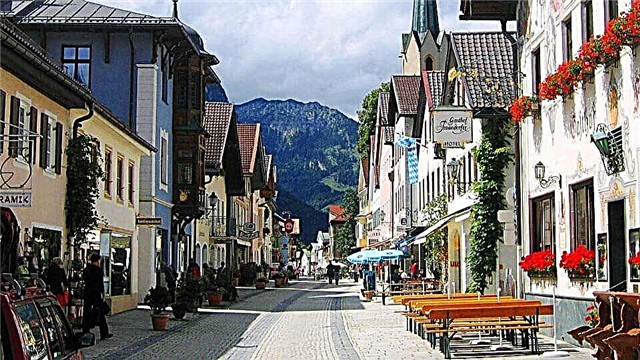
The small town is known as a popular ski resort in Germany. It is located next to the border with the province of Tyrol, surrounded by the picturesque Bavarian Alps. At the foot of the highest mountain, the Zugspitze, there are neat, painted houses, cozy restaurants, shopping centers, souvenir shops, and modern hotels. The first Alpine Skiing Winter Olympics of 1936 took place on the slopes of this mountain. Historically, the city was formed due to the merger of two ancient settlements: Garmisch and Partenkirchen. The city is divided by a railroad bed.
Connecting tunnels for transport and people pass under it. To plunge into the atmosphere of the city, you need to walk along the central street of Ludwigstrasse and look at old buildings of different times and styles. This is the Chapel of St. Sebastian, a splendid neo-Gothic parish church. In the vicinity of the town there are interesting castles (for example, Elmau), the famous Partnakhklamm gorge. You can come from Munich by rail or by car. Trains and buses leave every two hours. Travel time is 1 hour 30 minutes.
Ingolstadt
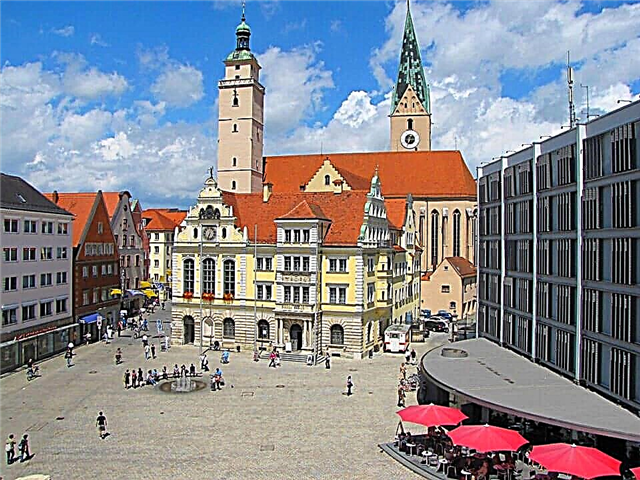
The ancient settlement of Upper Bavaria received the status of a city in 1457 (the first mention dates back to 806). The beautiful, green city is known all over the world as a center of automobile construction. Here is the Audi company. In her museum, it is invited to learn the history of the creation of the concern, to get acquainted with samples of numerous products. A walk around the city begins in the historic center. It has long been a pedestrian zone.
Large and small shopping centers and shops are located in half-timbered houses. Shopping lovers can drive to the Outlet Village with boutiques of world famous brands. There is a church-museum in the historical center of the city. It houses the world's largest flat mural. German Museum of the History of Medicine, Triva Tower, Old and New Town Halls. The entrance to the old part of the city is organized through the medieval Kreuztor gate. It is made in the Gothic architectural style of the country's romantic era. Ingolstadt Cathedral with dimensions that allow you to see it from anywhere in the city.
Church of Mary Victoria, Franciscan Basilica, Church of St. Maurice (the oldest church building in the city). Old and New Castles, where the interesting Bavarian Army Museum is located. Together with children, you can visit the city zoo Kleinzoo Wasserstern e.V. There is a convenient motorway A 9 and a railway from Munich to the city. The distance is 80 km. You can overcome it by high-speed train in 40 minutes and by car, bus in 1 hour.
Passau

At the confluence of three rivers (Ilce, Inne, Danube), an ancient settlement of the Celts arose. Convenient for a shopping, transport center, the place quickly turned into a beautiful, green city, decorated with majestic churches. The interior of huge temples, small, cozy churches amazes with elements of the Baroque style. During the walk, you can listen to the sound of the largest organ in the world in St. Stephen's Cathedral.
In the building of the old Town Hall, see an exposition of elements dedicated to the history of the city. See the beautiful pink St. Paul's Cathedral (it has 12 black altars decorated with gold). You can imagine yourself as a traveler of the Middle Ages while walking along the 321 steps of the "heavenly path" to the church and monastery of Mariahilfkirche. In the center of the city there is the Church of St. Michael. Inside there is a very beautiful dome, a mysterious figure of a fallen angel.
An obligatory place for a short walk around the city is its bridges. "German Venice" is decorated with several bridges built over different rivers. Among them is the famous Mary Bridge over the Inn River. It was built in the XII century for the passage of kings from Frankfurt to Budapest. You can come to the city from Munich by road or by rail.
Mount Ekbauer

Fans of ski sports have long known the slopes of Mount Eckbauer. Wide mountain trails are laid in a picturesque forest, pass in the shade of trees. They are equipped with Olympic jumps, tracks, 120 km long for beginners and experienced athletes at an altitude of 1238 m. It is always possible to choose an extreme or lightweight route of descent from the mountain (blue, red, black tracks). The mountain is located near the town of Garmisch-Partenkirchen.
Its history of development is associated with the organization of the venue for the Olympic Games in 1936. You can get to the top of the mountain by a special cress lift (for two places). You can ski on natural glaciers from November to May. Modern hotels, cafes, restaurants are located at the foot of the mountain. To travel to Mount Ekbauer (ski resort) from Munich, you can use the railway, motorway. Travel time is one and a half hours.
Regensburg

The history of Bavaria is interesting to learn from its first capital, Regensburg.Kings, bishops and Bavarian dukes built luxurious residences on the territory of the imperial city. Many medieval buildings created at the confluence of the Danube and Regens rivers can be seen today. The main attraction of Regensburg is the Cathedral of St. Peter. A gothic building rises on Cathedral Square in the center of the Old Town. The ancient castle of Thurn and Taxis (the former residence of an ancient family) is home to the descendant of the billionaire Albert von Thurn and Taxis.
Next to the legendary Stone Bridge is the restored building of Germany's oldest sausage Wurstküche (the country's first fast food). The Church of the Holy Trinity, home of the itinerant artists (Goliarden) depicting the classic battle of David and Goliath and many other attractions. It is more convenient to find out full information about them together with the excursion. Come to the city on your own from Munich (distance 124 km) by car, bus on the ideal autobahn in Germany or by regional train.
Kelheim

The small town lies between Regensburg and Ingolstadt and is not one of the primary tourist routes. This is one of the beautiful, cozy towns in Bavaria. Its difference is the fact that there is a natural attraction of Germany, included in the UNESCO lists - the Danube fault. The fast Danube miraculously cut through the Swabian Alb mountain plateau and formed an inland fjord.
From April to the end of October, it is proposed to make a fascinating boat trip along the bizarre rocks with the names "Kissing Couple", "Bavarian Lion", "Napoleon's Suitcase", "Three Warring Brothers", "Pie", "Beehive", etc. The route leads to the Weltenburg monastery. The ancient structure was founded in 617. Its medieval appearance has survived to this day. The oldest brewery in Germany also operates here, producing 10 varieties of the drink. On a high steep cliff there is another interesting attraction of the city: the "Hall of Liberation".

The domed structure (with typical Roman elements in the form of columns, arched galleries, statues) was built by order of King Ludwig I in honor of the victory over Napoleon's troops. The building is located on the top of the Michelsberg mountain and can be seen from anywhere in the city. Near the town is the village of Essing with the longest pedestrian bridge in Europe over the Main-Danube Canal. You can come here from Munich (distance 110 km) by train to Saal an der Donau, and then by regular bus. Moreover, one cannot do without a transplant in Ingolstadt or Regensburg.
Stuttgart

One of the main industrial and cultural centers of the country is located on the Neckar River. This ancient, fertile valley has been an important agricultural area since ancient times, which allowed the creation of a rich city even during the Roman Empire. Now it is one of the largest innovation centers in Europe. A city with high-tech enterprises in various industries. The largest mechanical engineering corporations and industrial giants are located in Stuttgart.
In terms of the level of well-being, he occupies a leading position. In the vicinity of the city there are several universities, higher schools, institutes. Popular attractions include the Monastery Church (the symbol of old Stuttgart), the Mercedes-Benz Museum. The Old Castle, Wilhelm's Botanical Garden, the White Courtyard or (Weissenhof) residential area, etc. From Munich you can get to the city by train (travel time 2 hours 20 minutes), in the same time by bus or rented car, by plane.




